Contents
- Early History
- Colonial History
- Local Figures & Organizations
- People’s Education Society
- Konkan Muslim Education Society
- Vidya Prasarak Mandal
- Post-Independence Era and Contemporary Educational Infrastructure
- Primary & Secondary Education
- Institutions of Higher Learning
- DY Patil Deemed University
- University of Mumbai, Thane Sub-Campus
- Prominent Figures & Organizations
- Lokmanya Tilak Jankalyan Shikshan Sanstha
- Principal K. M. Kundnani
- NGOs and Community-Based Education Efforts
- Signal Shala and Samarth Bharat Vyaspith (SBV) Foundation
- Graphs
- Enrollment and Dropout Rate
- A. Student Enrollment Numbers
- B. Student Enrollment (Class-Wise)
- C. Student Enrollment (Gender-Wise)
- D. Student Enrollment (By School Management Type)
- E. Drop Out Rate (By Schooling Level)
- F. Drop Out Rate (By Gender)
- Schools
- A. No. of Schools
- B. No. of Schools (Filtered by Gender Mix)
- C. No. of Schools (By School Management Type)
- Teachers
- A. No. of Teachers
- B. No. of Teachers (By School Management Type)
- C. No. of Teachers (Male vs Female)
- D. Education Level of Teachers
- Sources
THANE
Education
Last updated on 6 November 2025. Help us improve the information on this page by clicking on suggest edits or writing to us.
The educational framework of Thane aligns with the broader structure of the Indian education system, encompassing pre-primary, primary, secondary, and higher education. By the 19th century, the introduction of the Western education framework in the district changed its educational landscape. British administrators and missionaries became actively involved in shaping education in the region.
Still, even as colonial influences grew, the early 20th century saw a wave of local initiatives; its existence indicated an increasing public awareness regarding the importance of education. Local communities took charge of education, a movement that carried into the post-independence era, shaping the district’s educational landscape in lasting ways.
Early History
Little is known about the history of education in Thane, however, this does not imply that formal education was completely absent in the district. It is possible that, like many places across Maharashtra, some systems of education did exist in the district in earlier times. It is noted in the revised district Gazetteer (1982) that large villages in the region typically hosted local schools run by Brahmins. These institutions primarily catered to boys under the age of twelve, focusing on developing fluency in reading Marathi and writing in the Modi script, as well as arithmetic.
Colonial History
During the British era, Thane district saw relatively early and broad educational development compared to many other regions of Maharashtra. By the end of the 19th century, the district had 154 government schools, averaging approximately one school for every fourteen inhabited villages. Most of these schools used Marathi as the primary medium of instruction, though several also offered education in Gujarati, Urdu, English, and Portuguese. Girls' education, while limited, was present; six Marathi-language schools were established exclusively for female students. The district's first English-medium institution, Thane English School, was founded as early as 1821
Local Figures & Organizations
Although missionary and colonial influences played an early role in the expansion of education in Thane, several local efforts also contributed significantly to the district’s educational growth. Community-based initiatives and individual-led institutions laid the foundation for schools that continue to operate today.
People’s Education Society
The People’s Education Society was formally established on 13 January 1936, although its roots trace back to 1926 when V. N. Bhole, then principal of the New English School in Thane, initiated efforts to expand access to quality education.
Initially operating with only five classes, the school expanded into a full-fledged high school by 1934. Bhole, joined by K. B. Joshi in 1932, envisioned education as fundamental to individual and social development. The formation of the People’s Education Society provided a formal structure for sustaining and expanding these efforts. Over time, the society became a central institution in Thane’s educational landscape.
Konkan Muslim Education Society
Established in 1927, the Konkan Muslim Education Society has also played a significant role in providing education in the district, particularly in the Bhiwandi area. Over the decades, it has expanded its network to include multiple primary and secondary schools, a technical training institute, junior colleges, and a multi-faculty women’s college affiliated with the University of Mumbai. The society’s work has focused on making education accessible across communities, especially in regions where institutional support was otherwise limited.
Vidya Prasarak Mandal
Established in 1935, Vidya Prasarak Mandal was founded to address the lack of educational infrastructure in Thane. Among its early leaders was Dr. V. N. Bedekar, a physician and community leader. The trust’s efforts culminated in the establishment of its first colleges in 1968–69 on land provided by the Government of Maharashtra in Chendani, Thane.
Today, VPM runs a group of institutions offering undergraduate and postgraduate education in arts, commerce, science, law, and management, including Joshi-Bedekar College and the Institute of Management Studies. It has played a key role in expanding local access to higher education in Thane city.

Post-Independence Era and Contemporary Educational Infrastructure
Following India's independence, the education system in the district underwent major transformations, driven by both state policies and local leadership. The introduction of structured education levels, pre-primary, primary, secondary, and higher education, along with the implementation of National Education Policies, heavily shaped Thane’s educational landscape. Over the years, the sector expanded with contributions from both government-funded institutions and private organizations. Additionally, the introduction of various educational boards, each offering distinct curricula and standards, provided students with more choices and opportunities.
Primary & Secondary Education
During the colonial period, both public and private efforts in education primarily focused on primary and secondary schooling, as indicated by data from district gazetteers across Maharashtra. Higher education remained underdeveloped in most districts, including Thane, with gradual improvements over time. While basic infrastructure for primary and secondary education existed, its expansion was closely tied to increasing enrollment and greater involvement of local figures.
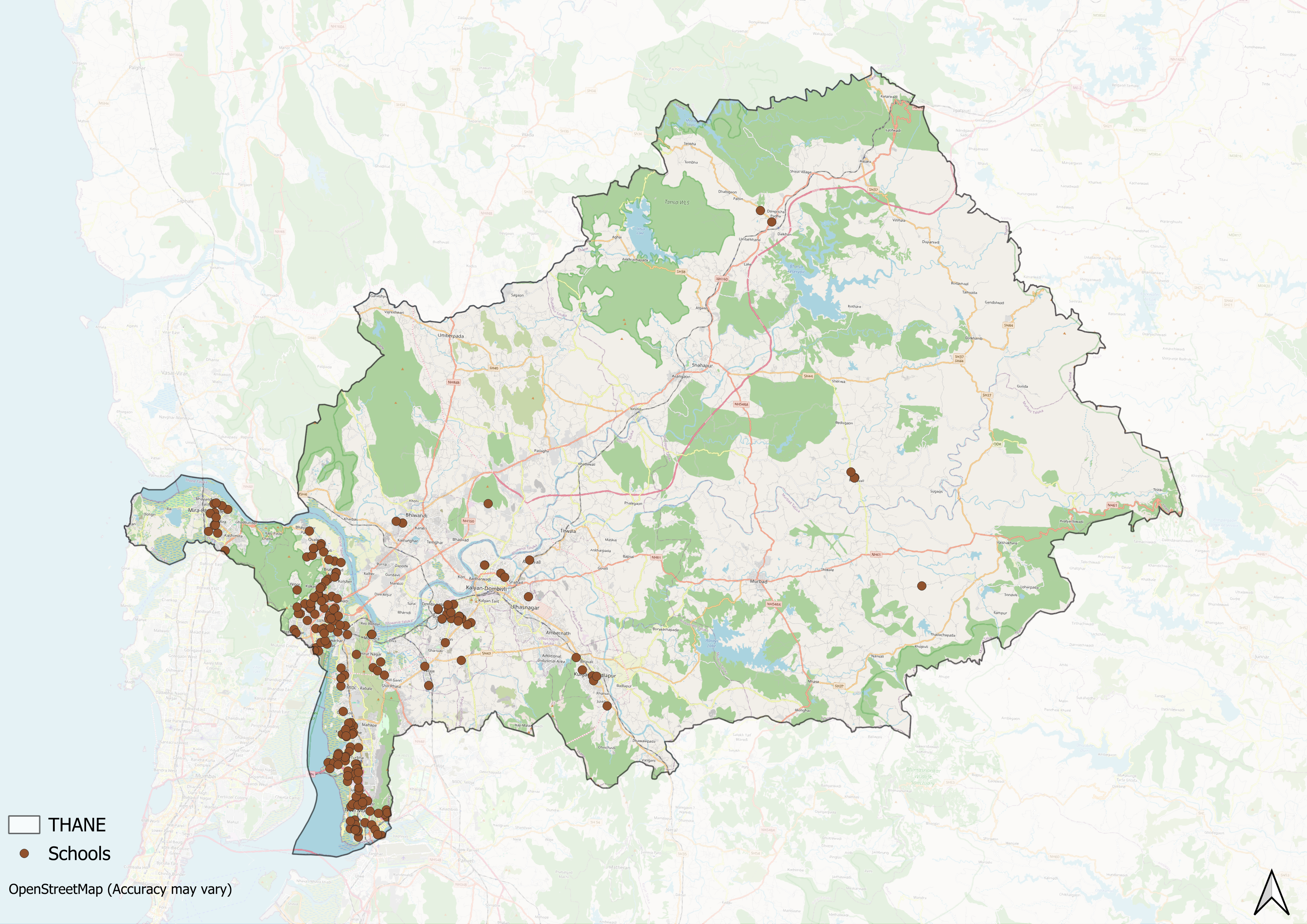
Today, this expansion is evident in the widespread presence of schools across various wards of Thane, with available data reflecting the steady growth of educational institutions in both urban and rural parts of the district.
Over time, institutions affiliated with various educational boards also emerged. While State Board institutions remain widespread, the district has also seen the growth of ICSE, IGCSE, and IB curriculum schools. Among the more prominent are Smt. Sulochanadevi Singhania School, Hiranandani Foundation School, and Billabong High International School, which have gained prominence since the late 20th and early 21st centuries.

In recent years, a unique educational initiative has emerged in Thane, blending India’s ancient educational heritage with contemporary syllabi. The Veda Pathshala, situated within the South Indian Education Society (SIES) campus in Nerul, serves as a prime example of this innovative approach. It features an integrated curriculum that combines Vedic teachings with a contemporary English syllabus. Many students in this fully-funded residential program come from underprivileged rural families. By emphasizing the traditional Guru-Shishya relationship, the school creates an environment where modern education and Vedic wisdom harmoniously coexist.
Institutions of Higher Learning
Perhaps one of the most notable changes in Thane’s educational landscape is tied to the establishment of higher education institutions. While primary and secondary schooling expanded steadily, opportunities for advanced education remained limited for much of the district’s history. Over time, local leaders and organizations played a crucial role in addressing this gap, leading to the creation of several colleges. As a result, many institutions in the district today are privately managed, semi-private, or autonomous.
DY Patil Deemed University
DY Patil Deemed to be University is located in Nerul, Navi Mumbai, in Thane district. Recognised under the Government of Maharashtra Act in 2019, it functions as a private deemed university and is accredited with an ‘A++’ grade by the National Assessment and Accreditation Council (NAAC). The institution offers more than 150 academic programmes across fields such as engineering, health sciences, management, and liberal arts.
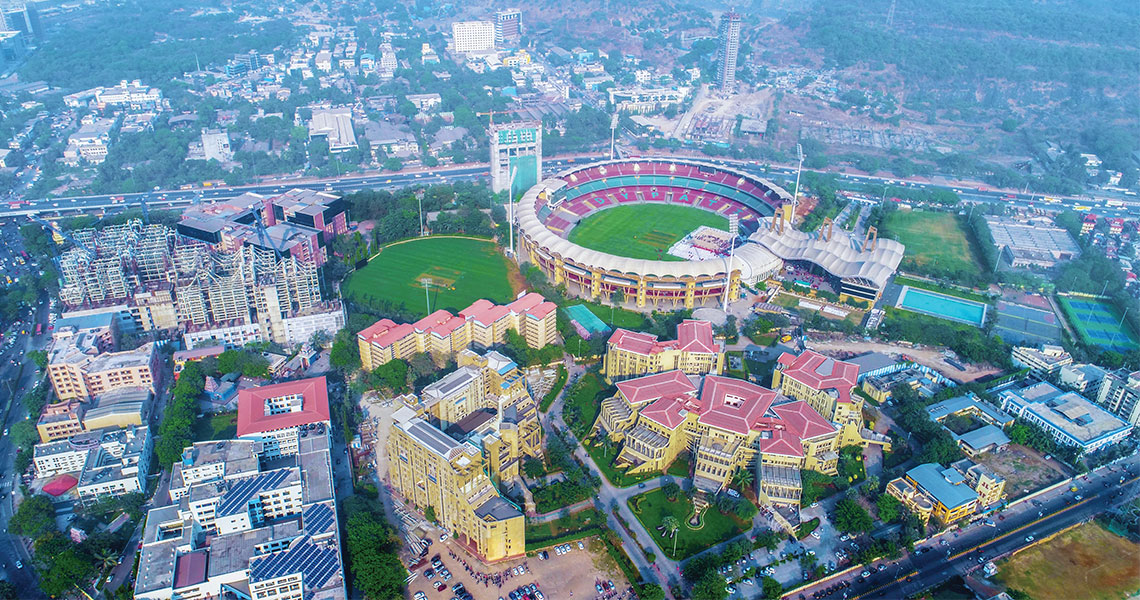
The university traces its origins to the establishment of the Ramrao Adik Institute of Technology in 1983, one of the earliest private engineering colleges in Navi Mumbai. Over the following decades, additional institutions were developed by the DY Patil Group, gradually forming an integrated network that laid the foundation for the present-day university structure.
University of Mumbai, Thane Sub-Campus

The Thane Sub-Campus of the University of Mumbai is located in Balkum, Thane city. Established in 2014, the sub-campus was part of the university’s effort to decentralize its operations and improve access to higher education in the Mumbai Metropolitan Region. It functions as an extension centre of the parent university and offers select integrated and professional degree programmes.
Among the key courses offered at the Thane Sub-Campus are the five-year integrated Bachelor of Business Administration and Bachelor of Legislative Law (BBA-LLB) and the Bachelor of Management Studies (BMS). These programmes aim to provide students with interdisciplinary training and exposure to both academic and practical aspects of business and law.
Notably, the establishment of the Thane Sub-Campus reflects a broader institutional push to serve growing educational demand in urban peripheries, reducing the pressure on the university’s main campuses while creating new academic hubs within the district.
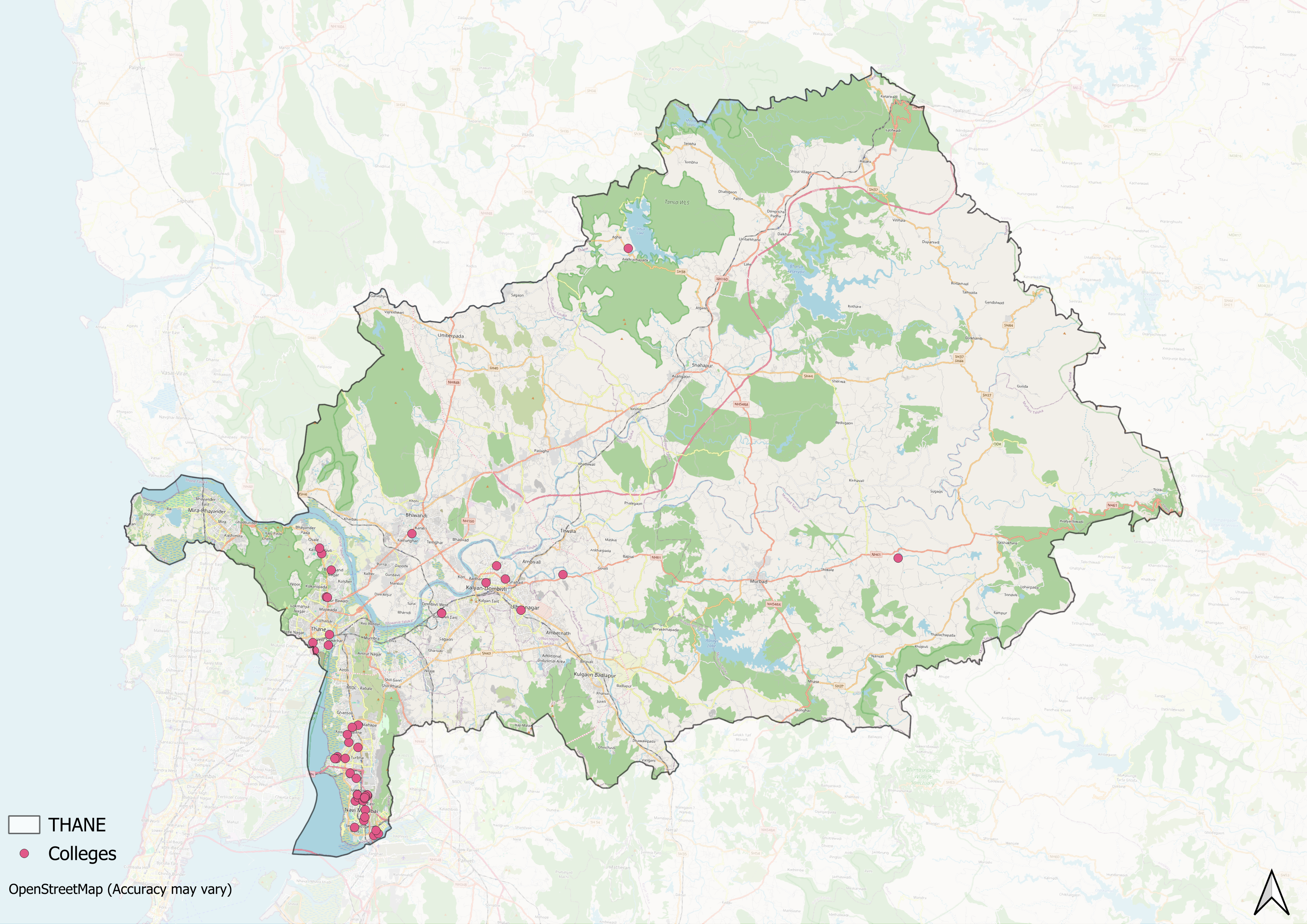
In addition to these institutions, a number of centres for higher education operate throughout the district, which offer programmes across various disciplines. While the landscape of higher education has broadened significantly since independence, disparities in access, particularly along geographic lines, remain evident.
Prominent Figures & Organizations
Lokmanya Tilak Jankalyan Shikshan Sanstha
Founded in 1983, the Lokmanya Tilak Jankalyan Shikshan Sanstha is a major educational trust headquartered in Nagpur. Drawing inspiration from the nationalist ideals of Bal Gangadhar Tilak, LTJSS was established by Shri Satish Chaturvedi and Smt. Abha Chaturvedi. The trust has grown into a network of over 30 institutions offering education in engineering, architecture, pharmacy, medicine, and other fields.
LTJSS expanded its presence to Navi Mumbai in 1994 with the establishment of institutions such as the Lokmanya Tilak College of Engineering. The organization continues to operate with the aim of advancing access to professional and technical education across Maharashtra.

Principal K. M. Kundnani
Principal K. M. Kundnani was an influential educational reformer in India, known for his significant contributions to the development of educational institutions in Mumbai following the partition of India in 1947. Originally from Sindh, now in Pakistan, Kundnani was forced to leave his homeland during the partition. He arrived in Mumbai with a vision to resurrect the National College, which he had previously closed in Sindh.
His efforts led to the establishment of multiple educational institutions and the formation of the HSNC Board (Hyderabad (Sind) National Collegiate), a new University established in Mumbai (see Mumbai City for more).
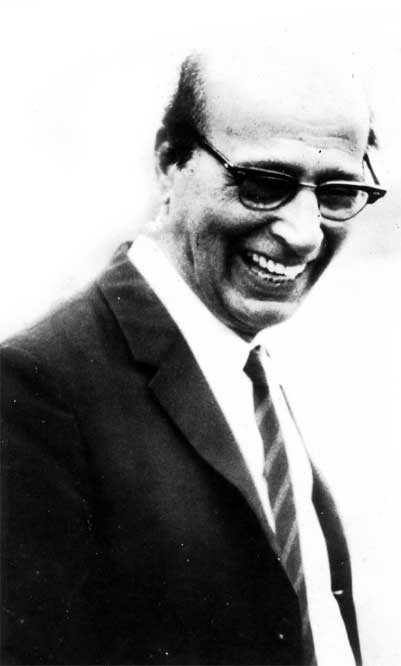
Among the notable institutions associated with him is Smt. Chandibai Himathmal Mansukhani College (CHM College), founded in 1965 in Ulhasnagar. The college began with just 250 students and four departments, and has since grown into one of the largest colleges affiliated with the University of Mumbai. Located near the Ulhasnagar railway station on a large campus, CHM College continues to serve as a key centre of higher education and research in the area.
NGOs and Community-Based Education Efforts
Education has been a key driver of social reform, particularly in addressing inequality and expanding access to learning. While formal institutions provide structured education, many communities continue to face barriers due to poverty, social stigma, or lack of resources. To address these challenges, various organizations in Thane have focused on community-based education initiatives, with each working to tackle specific social challenges present in the district.
Signal Shala and Samarth Bharat Vyaspith (SBV) Foundation
One notable example is Signal Shala, a school established to serve children who work or beg at traffic signals. Located under the Teen Hath Naka flyover in Thane, Signal Shala began operations on 15 June 2016 and is widely recognized as India’s first registered school for disadvantaged children who reside near signals. It functions out of a modified shipping container and provides basic education and support services in a space accessible to its target group.
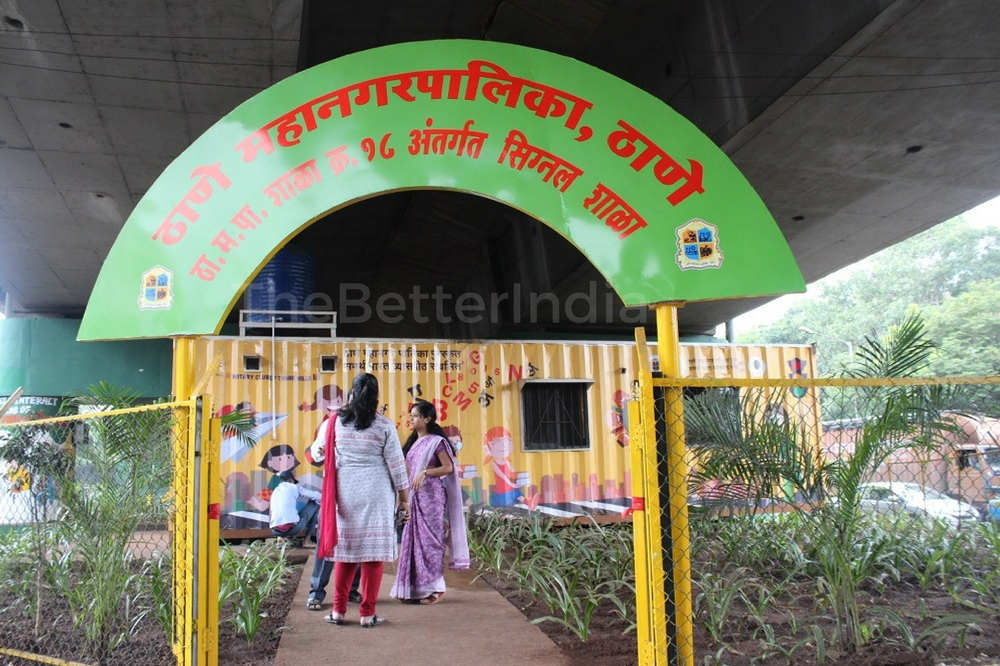
The initiative was launched by SBV Foundation, a Pune-registered NGO, following a series of surveys at major traffic signals in Mumbai. These studies identified children routinely present at intersections and engaged in street-based livelihoods. Discussions with their families revealed that many had migrated from drought-prone regions of Maharashtra and had been living on or near the streets for over two decades.
SBV developed Signal Shala to address the absence of education among these children, who are often excluded from mainstream schooling due to mobility, lack of documentation, or economic pressures. The school offers a tailored curriculum designed to be compatible with the children’s circumstances, while also working to transition eligible students into formal education pathways.
Notably, SBV aims to replicate the Signal Shala model in other urban centres across India, addressing the specific challenges of educating children who are part of mobile, informal economies.
Graphs
Enrollment and Dropout Rate
Schools
Teachers
Sources
Changu Kana Thakur College.History.CHM College..
D.Y. Patil University.Founder President..
D.Y. Patil University.Postgraduate Programs.
Explore Thane.History of Thane.
Gazetteer of the Bombay Presidency. 1882 (Revised 1982). Thana District.Parts I and II. Superintendent of Government Printing, Bombay.
http://www.ltjss.net/about-sanstha.phphttp://www.ltjss.net/about-sanstha.php
http://www.vpmthane.org/vpm/vpm_profile_sept2013.pdfhttp://www.vpmthane.org/vpm/vpm_profile_sept…
https://dypatil.edu/programs/post-graduatehttps://dypatil.edu/programs/post-graduate
https://dypatiluniversityonline.com/founder-presidenthttps://dypatiluniversityonline.com/founder-…
https://explorethane.in/history-of-thane/https://explorethane.in/history-of-thane/
https://ltce.in/abt_ltce-at-a-glancehttps://ltce.in/abt_ltce-at-a-glance
https://mu.ac.in/thane-sub-campus-2https://mu.ac.in/thane-sub-campus-2
https://nationalschoolbordi.com/history/https://nationalschoolbordi.com/history/
https://thebetterindia.com/67316/signal-shala-school-thane-mumbai/https://thebetterindia.com/67316/signal-shal…
https://www.chmcollege.in/history/https://www.chmcollege.in/history/
https://www.dnaindia.com/mumbai/report-a-vedic-school-to-groom-global-citizens-1588https://www.dnaindia.com/mumbai/report-a-ved…
https://www.pesthane.org/https://www.pesthane.org/
Lokmanya Tilak College of Engineering.About LTCE..
Lokmanya Tilak Jankalyan Sanstha.About Sanstha.
National School Bordi.History.
P.E.S. Thane.Official Website.
Smita Deshmukh.2015. “A Vedic School to Groom Global Citizens.”DNA India.
Tanaya Singh.2016. “This Unique School Under a Flyover Is Giving Street Kids the Chance to Learn.”The Better India..
University of Mumbai.Thane Sub-Campus.
Vidya Prasarak Mandal. 2013.VPM Profile.
Last updated on 6 November 2025. Help us improve the information on this page by clicking on suggest edits or writing to us.